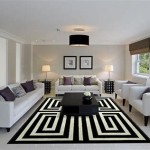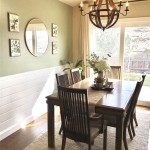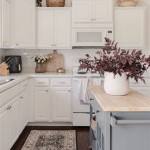Decorating the Home Office: A Guide to Productivity and Style
The integration of work and personal life has led to a significant increase in the prevalence of home offices. Beyond simply designating a space for work, the creation of a well-designed and functional home office is crucial for promoting productivity, maintaining work-life balance, and fostering a sense of professional identity. This article will explore key considerations for decorating a home office, focusing on practical aspects, aesthetic principles, and ergonomic best practices.
Space Planning and Layout Optimization
Effective space planning is the cornerstone of a successful home office. The initial step involves assessing the available area and determining the essential functions that the office needs to accommodate. This includes not only the primary workstation but also potential storage needs, meeting spaces (if applicable), and areas for relaxation or contemplation. A careful evaluation of spatial constraints is essential to prevent overcrowding and ensure a comfortable and efficient workspace.
Consideration should be given to the placement of the desk. Ideally, the desk should be positioned to take advantage of natural light, which can significantly reduce eye strain and improve mood. However, direct glare from windows should be avoided. If natural light is limited, supplementing with adequate artificial lighting is crucial. Task lighting, ambient lighting, and accent lighting should be combined to create a well-lit and balanced environment. Furthermore, the desk should be positioned in a way that allows for a clear line of sight to the entrance of the room, promoting a sense of awareness and control.
The layout of the home office should facilitate efficient workflow. Frequently used items should be within easy reach, minimizing the need to stretch or move excessively. Storage solutions, such as shelves, cabinets, and drawers, should be strategically placed to keep the workspace organized and clutter-free. Vertical space should be utilized effectively to maximize storage capacity, especially in smaller offices. The incorporation of ergonomic principles, such as proper monitor height, keyboard placement, and chair adjustability, is essential to prevent musculoskeletal issues and promote long-term comfort.
The overall flow of the room is also a critical factor. Ensure there is adequate space to move around comfortably without bumping into furniture or equipment. If the office is used for client meetings, create a designated area that is professional and inviting. Consider the placement of power outlets and cable management to avoid tripping hazards and maintain a clean and organized appearance.
Selecting Furniture and Equipment
The selection of appropriate furniture and equipment is paramount for creating a functional and comfortable home office. The desk is the central element and should be chosen based on the anticipated workload and personal preferences. A desk that is too small can feel cramped and restrict movement, while a desk that is too large can overwhelm the space. Consider the material, finish, and style of the desk to ensure it complements the overall aesthetic of the room. Adjustable height desks are increasingly popular, offering the flexibility to alternate between sitting and standing, which can have significant health benefits.
The chair is arguably the most important piece of furniture in the home office. Invest in an ergonomic chair that provides adequate lumbar support, adjustable armrests, and a breathable backrest. The chair should be adjustable to ensure proper posture and alignment. Proper chair selection can significantly reduce back pain and discomfort associated with prolonged sitting. It is advisable to test several chairs before making a purchase to find one that fits your individual needs and preferences.
Beyond the desk and chair, other essential equipment includes a computer, monitor, keyboard, mouse, printer, and scanner. Choose equipment that is appropriate for the tasks to be performed and that is ergonomic and comfortable to use. Consider the size and resolution of the monitor, the key travel of the keyboard, and the sensitivity of the mouse. Wireless peripherals can help to reduce clutter and provide greater flexibility. A high-quality printer and scanner can be invaluable for handling documents and paperwork.
Storage solutions are also crucial for keeping the home office organized. Shelves, cabinets, drawers, and filing cabinets can be used to store books, documents, supplies, and other items. Consider the style and color of the storage units to ensure they complement the overall décor of the room. Labeling shelves and drawers can help to keep things organized and easy to find.
Aesthetic Considerations and Personalization
While functionality is essential, the aesthetic appeal of the home office should not be overlooked. Creating a visually pleasing and inspiring workspace can significantly enhance productivity and creativity. The color scheme, décor, and overall atmosphere of the room should reflect personal taste and create a positive and motivating environment.
Color psychology plays a significant role in the mood and energy of a room. Cool colors, such as blue and green, are often associated with calmness and focus, while warm colors, such as red and yellow, are associated with energy and creativity. Neutral colors, such as white, gray, and beige, can provide a versatile backdrop that can be easily accented with pops of color. Consider the overall feeling you want to create in the home office and choose colors accordingly.
Adding personal touches to the home office can make it feel more welcoming and inspiring. Artwork, photographs, plants, and other decorative items can add personality and character to the space. Choose items that you find visually appealing and that reflect your interests and hobbies. Plants can help to purify the air and add a touch of nature to the room. Artwork can provide visual stimulation and inspiration. Photographs can remind you of loved ones and positive experiences.
Lighting is a crucial element of interior design and can significantly impact the ambiance of the home office. Natural light is ideal, but supplemental artificial lighting is often necessary. Task lighting, such as a desk lamp, can provide focused illumination for specific tasks. Ambient lighting, such as recessed lighting or a floor lamp, can provide overall illumination for the room. Accent lighting, such as a spotlight or wall sconce, can highlight artwork or architectural features. Consider the color temperature of the light bulbs to create the desired mood. Warm light is more relaxing, while cool light is more energizing.
Finally, consider incorporating elements that promote relaxation and well-being. A comfortable armchair, a small bookshelf, or a calming water feature can provide a welcome respite from work. Creating a designated area for relaxation can help to reduce stress and improve focus. Even small details, such as a scented candle or a diffuser, can contribute to a more pleasant and productive work environment.
By carefully considering space planning, furniture selection, and aesthetic considerations, it is possible to create a home office that is both functional and inspiring. A well-designed home office can significantly enhance productivity, reduce stress, and promote a better work-life balance.

Top 5 Home Office Wood Tailors Club Riveting Craftsmanship

20 Inspirational Home Office Decor Ideas

8 Dicas Imperdíveis Para Organizar O Ateliê Home Office Organization Space Design
:strip_icc()/home-office-decor-ideas-15-proem-studio-union-square-0527b42d3b864d82a9aa68dc7b982704.jpeg?strip=all)
How To Perfectly Decorate Your Home Office

35 Home Office Decor Ideas Designs For A Creative Work Space

26 Smart And Aesthetic Home Office Design Ideas Decor

45 Best Home Office Ideas Decor Photos

Home Office Ideas Interior Design Decor And Layout Tips Decorilla

Best Home Office Decor Ideas For Remote Workers Streeteasy

Home Office Ideas 7 Tips From Interiors Experts
Related Posts







